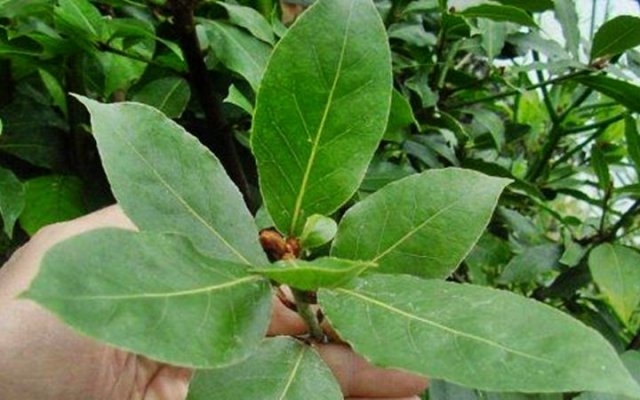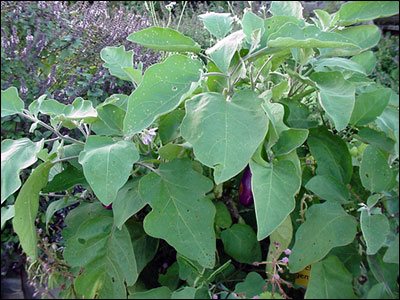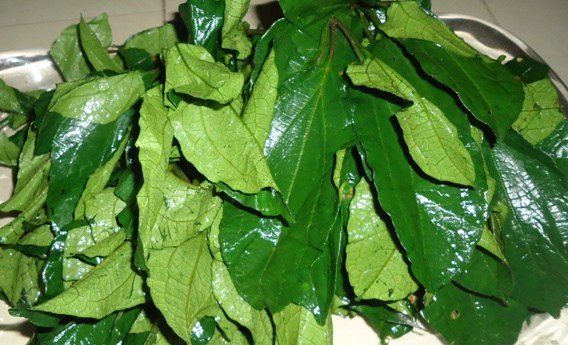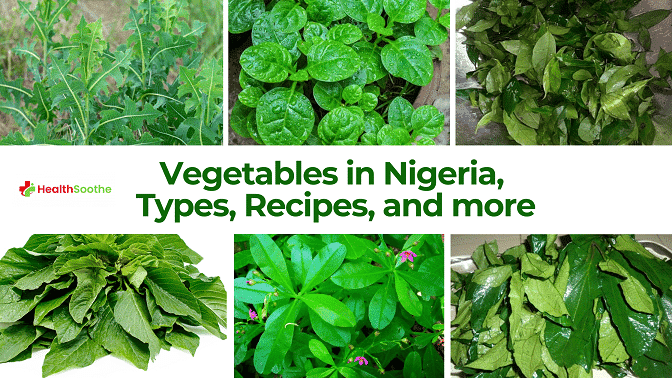Apart from your native or regional vegetables, have you ever wondered about other varieties of vegetables in Nigeria and how amazing they would be?
Don’t get me wrong, I’m not calling you a foodie. But if that’s what it means trying out the other amazing available vegies in Nigeria, then you’ll probably have to call me a Foodie Plus.
Having been tired of my native flavours, I had to venture into other Vegetables in Nigeria, trying their recipes and a lot more.
The post features more than just the veggies, it’s botanical names, local names, which meal there are used with, and more.
Recommended for you: Nutritional value of Green amaranth vegetables
Vegetables in Nigeria, botanical names, and more
Below is the list of most of the common vegetables in Nigeria
Efo Yanrin (Wild Lettuce)
Dandelion greens are the English name for this plant.
Efo Yarin is the local name (Yoruba)
Taraxacum officinale, Asteraceae (Family)
This edible plant’s leaves are eaten raw in salads or cooked in soups and sauces. The plant is often planted for the purpose of harvesting the leaves, which are then sold boiled, or rolled into balls in marketplaces.
The leaves’ mineral content is reported to be rather high (21.8 per cent).
Bitter leaves (Efo ewuro)

Bitter leaf is the English name for this plant.
Ewuro is the local name (Yoruba)
Vernonia amygdalina (botanical name) is a member of the Compositae family of plants.
For most Nigerians, the bitter leaf is an essential vegetable; it can be found in many markets throughout the year and is often grown in home gardens. It thrives anywhere it grows.
There are various species, some with huge, lush, deep green leaves and others with smaller leaves.
The leaves are quite bitter, as the name indicates; the bitterness is normally reduced by washing or boiling the leaves.
African Spinach (Efo Tete)

Callaloo (African Spinach) is the English name for this plant.
Efo Tete is the local name (Yoruba)
Amaranthus hybridus is a plant in the Amaranthaceae family (Botanically)
This veggie is a herb that grows year after year. It is abundant during the wet season, as one would anticipate. It is supposed to have travelled from Asia to West Africa in the past. Both the stem and the leaves may be eaten.
The plant comes in three main colours (pink, deep red, and green); in North America, the coloured varieties are used for decoration. In Nigeria, the green-coloured type is the only one that is eaten.
See Also: Disadvantages of Garden Eggs You Never Knew
Efo Shoko
Lagos Spinach is the English name for this kind of spinach.
Shokoyokoto is the local name for the area (Yoruba)
Celosia argentea, Amaranthaceae (Family)
In the Lagos Metropolitan Area markets, “Lagos Spinach” is a particularly popular vegetable. It is widely offered during the wet season. The taste characteristic of this perennial plant is mildly bitter, and the leaves are slightly diuretic.
The mild bitterness is offset by the addition of ground melon and sauces while it is cooking. The Yorubas refer to it as “sokoyokoto,” implying that the vegetable plant is regarded in high regard. ‘Sokoyokoto’ literally translates to “making hubby fat.”
Gbure (water leaves)

WaterLeaf is the English name for this plant.
Gbure is the local name (Yoruba)
“Talinum Triangulare, Family Portulacaeae,” Botanically
During the rainy season, the waterleaf vegetable is abundant, as its name suggests. The waterleaf plant is classified as a weed, which is ironic.
Cuttings and seeds are both easily propagated, and the plant grows quickly and has a short life cycle. Cooked, in salads, and in soups, the vegetable is consumed.
It is said to be high in mineral salts and amino acids, as well as having anti-scorbutic properties, according to experts.
Eggplant leaves (Efo Igbo)

Leaf of the African Egg Plant in English
Efo Igbo is the local name (Yoruba)
Botanically: Solanum macrocarpon, Family: Solanaceae
In the Lagos Area Markets, the “African Egg Plant” is one of the most coveted veggies. The vegetable does not appear in great numbers on the market like the others, but it is prized by the Yoruba people.
The plant is mostly grown for its bitter leaves; the fruits are eaten infrequently but are mostly stored for propagation reasons.
Amunututu

Malabar Spinach is a kind of spinach native to the Indian subcontinent.
Amunututu is the local name for (Yoruba)
Basella alba is the botanical name, Family Basellaceae
This plant is native to Afro-Asia. Locals call it “amunututu,” which literally means “a cool stomach appetizer,” and “Toromoganna,” which means “a wall climber.”
The leaves have high water content and are succulent. It may be annual or perennial with a limited lifespan.
The flavour profile is modest, with a mucilaginous texture (similar to aloe vera). This vegetable is high in calcium and iron, as well as vitamins A, B, and C. It is also high in protein and soluble fibre.
Read Also: 7 Nigerian Foods Rich in Calcium
“Efinrin” | African blue basil (scent leaf)

African Basil is the English name for this plant.
Efirin (Yoruba), Nahianwu (Igbo), Daidoya are some of the local names (Hausa)
Botanically, Ocimum gratissimum belongs to the Labiatae family.
“Efirin” (scent leaf) is a popular vegetable distributed around the nation for its several medical applications; it’s also often planted as a mosquito repellent around homes.
I used to think African blue basil and African basil were the same things, but they’re different. The most noticeable distinction is that African blue basil leaves start off purple while young, becoming green only when the leaf reaches full size, and even then, the veins remain purple.
African basil is said to have analgesic properties, which is why it’s an important element of postnatal meals.
Ebolo

Yoruba bologi is its English name.
Ebolo is the local name for (Yoruba)
Crassocephalum rubens belongs to the Comopositae family of plants.
““Ebolo” is a rare vegetable that is only available following the advent of the new yam, which is late in the rainy season.
The semi-succulent leaves and the whole young plant are mucilaginous and used as a potherb in soups and sauces. The leaves have a laxative effect.
Afang Leaves

There is no English name for this plant
Afang (Ibibio), Okazi are the local names (Igbo)
Botanically, Gnetum africanum belongs to the Gnetaceae family.
The ethnic peoples of southern and southeastern Nigeria are huge fans of this vegetable. It is known as “afang” by the Efik and Ibibio peoples, and “okazi” by the Igbo people. The leaves are obtained as forest products and the plant is not farmed.
Afang is a good source of protein, carbs, necessary amino acids (non-essential amino acids), and mineral components (macroscopic and microelements).
Ugu

Fluted pumpkin leaf is the English name for this plant.
Ugu is the local name for
“Telfairia occidentalis, Cucurbitaceae” is the botanical name.
The “ugu” vegetable’s leaves and young shoots are often used as a potherb and in soups. Ugu is said to be the most popular vegetable among Ibo speakers.
Ugu is said to provide a number of nutritional and health advantages, although there isn’t much evidence to back this up. Ugu is effective in regenerating or replenishing cells and tissues, as well as treating anaemia (Ukwuoma and Mauaya,2005 and Beck,1980).
Recommended for you: 7 Benefits of Ugu Juice and Milk During Pregnancy
27 Recipes produced with these Nigerian Vegetables
I’ve got a lot of Nigerian cuisine recipes and a lot of different alternatives for you to select from. These Nigerian delicacies have brought us together as a country.
Here are the basic Nigerian foods, exactly the way grandmas prepared them, from tubers, cereals, and swallows to Nigerian soups and stews, not to mention Nigerian snacks.
1. Otong Soup (Efik Style Okra Soup)
The Efik people of Cross River, Nigeria, have a famous traditional Okra soup dish called otong soup.
Otong soup is identical to Ila Alasepo, a Yoruba okra soup. The inclusion of Ugu leaves, which isn’t required in the production of Ila Alasepo, is the main distinction.
2. Afang Soup
The afang soup from Nigeria is similar to the edikang ikong soup from China. It is indigenous to the Efik people of Akwa Ibom and the Nigerian cross-river states, but it is enjoyed by all.
It’s also very healthy, as the soup is mostly made up of vegetables. This soup is made with a lot of water leaves and okazi leaves, which are wild herbs.
3. Ekpang Nkukwo
One of the Nigerian cocoyam recipes is ekpang nkwukwo, which is made with grated cocoyam, cocoyam leaves, water yam, and periwinkle.
It is a Nigerian food recipe that originated in the states of Cross River and Akwa Ibom in the south-eastern part of the country.
4. Oha Soup
The origins of ora (oha) soup can be traced back to southeastern Nigeria. It’s a traditional soup made with ora leaves that’s similar to bitter leaf soup.
Ora (oha) soup is unique in that the tender ora leaves used in this soup recipe are only available during certain seasons, unlike their bitter leaf counterpart, which is available all year.
You Can Watch: How to prepare delicious Oha Soup
5. Starch and Banga Soup
Banga soup is a popular dish in Nigeria’s south. This tasty Nigerian soup may be served with a side of starch. Who wouldn’t want to see it?
6. Efo Riro and Semolina
Efo riro is a traditional Yoruba dish from Western Nigeria. Green vegetables such as pumpkin leaves or water leaves, as well as spinach, may be added to the stew’s contents.
Nigerians in the diaspora miss this culinary combo, which is usually served with semolina.
7. Jollof Rice
Nigerians are well-known for their jollof rice. Jollof rice is a must-have at every Nigerian gathering! The Nigerian party jollof rice is said to be unique.
The dish, on the other hand, has a distinct flavour and scent that is distinct from typical jollof rice.
The majority of Nigerians anticipate owanbe celebrations in order to partake in this delectable cuisine.
8. Rice and Banga Soup (Ofe Akwu)
Banga soup, or ofe akwu as it is affectionately known by the Igbos, is a kind of stew cooked from palm fruit that is commonly served with rice.
9. Tuwo Shinkafa
Tuwo shinkafa is a Hausa word that translates to “mashed rice.” It is one of the most delectable cuisines in Nigeria’s northern region.
Tuwo is a mushy rice dish with a spicy sauce. The majority of Nigerians residing abroad who are from the north adore and miss this cuisine.
10. Ofada Rice Stew
The dish is a stew from western Nigeria that is typically served with ofada rice, a locally grown rice.
The ofada rice and stew has a cult following. Maybe it’s because of the iru (locust beans) component, or maybe it’s because it’s composed entirely of peppers and various meats.
11. Ewa Aganyin
Ewa aganyin is a wonderful bean dish known for its softness and flavorful sauce. It’s traditionally served with Agege bread, boiling yams, and fried plantains, and it’s delicious!
12. Pap and Akara
One of Nigeria’s traditional morning delicacies is Akara with pap. Akara is a processed ground bean transformed into a fried bean cake, while pap is cornmeal prepared from wet corn starch.
Akara is also a popular street dish, with vendors frying them at all hours of the day. It’s often served with ogi (spicy kimchi), bread, and cornstarch (agidi or eko).
13. Moin Moin
Moimoi, also known as moin-moin, is a steaming bean pudding prepared with ground-pealed beans, pepper, and onions.
It is a staple cuisine in Nigeria that is high in protein. Native to the Yoruba people of Nigeria, this dish is very delectable and wonderful.
14. Amala and Ewedu Soup with Buka Stew
Ewedu Elegusi (Jute + Melon Seed) is a Yoruba dish eaten with gbegiri (beans soup) and/or a palm oil-based stew.
This concoction is often saved aside for amala (fermented yam dumpling) and served as a regular meal or on special occasions.
15. Bitter Leaf Soup with Fufu
Bitter leaf soup is one of Igbo land’s most beloved soups. It is known as ofe onugbu by the Nigerian Igbo people.
The term bitter-leaf soup comes from the fact that it is made using a bitter leaf (until cleaned) that is used in the cooking process. Pounded yam, fufu, semo, wheat, or garri are good accompaniments.
16. Eba and Okra Soup
Okra soup is one of the simplest and most affordable Nigerian soups to make. In Hausa, this soup is known as miyan kubewa.
Once you’ve finished chopping the okra, the soup will be ready in no time. Serve with eba or your favourite swallow.
17. Edikang Ikong Soup
The Efik people of Akwa Ibom and the Cross River state of Nigeria are the originators of the Nigerian edikang ikong soup, or simply vegetable soup.
This Nigerian soup dish is healthy in every sense of the word since it is made with a large number of pumpkins and water leaves.
Recommended for you: 10 Nigerian Foods that Boost Breast Milk
18. Pepper Soup
A typical Nigerian soup dish is Nigerian pepper soup. It’s a versatile recipe because it can be made with a variety of fish and meats.
As a result, there’s catfish pepper soup (also known as point & kill), chicken pepper soup, goat meat pepper soup, cow foot pepper soup, and various beef pepper soups.
19. Ofe Nsala
In the eastern portion of Nigeria, Ofe nsala (nsala soup) is a popular soup. It’s also known as white soup owing to the lack of palm oil, which gives it a pale hue.
Fresh entire catfish is used in the original nsala soup recipe, which gives it its particular taste. If catfish isn’t available, catfish fillets or conger eel may be substituted.
20. Suya
Suya is a spicy beef dish that is popular in West Africa. (also known as agashe) Suya is commonly prepared with ram, beef, or chicken on skewers.
The Hausa people of northern Nigeria cook it according to custom. The kidney and liver are also utilized as innards.
21. Kilishii
Kilishii is a delicacy in Hausa country, a dried version of suya. After the bone has been removed, it is produced from cow, sheep, or goat flesh.
Kilishi may be stored for months without losing its flavour.
22. Abacha and Ugba
Abacha and ugba are known as African salads and they may be eaten as a meal or snack, many eat them as a meal since it fills up the stomach just like any other meal.
This dish is well-known and well-liked among the Igbos in the eastern portion of Nigeria, and they like it.
23. Nkwobi
In eastern Nigeria, nkwobi is a traditional grilled spicy cow leg treat. The majority of Nigerian guys go to Igbo eateries to sample this delicacy.
Read Also: 8 Nigerian Foods Rich in Iron
24. Groundnut and Boli
For Nigerians, boli-roasted plantain is a delectable snack, particularly when served with groundnut or pepper sauce.
Nigerians both at home and abroad like this snack.
25. Puff Puff – Delicious Sweet Hearty Balls
A popular West African street snack that may be made quickly and easily in a variety of ways. Nigerian puff puff is a spongy, deep-fried round snack native to the country.
26. Ukwa
Ukwa, also known as breadfruit in English, is a versatile meal popular in Nigeria’s eastern region. It can be fried and served with palm kernels or coconut. Ukwa is a type of porridge that has been around for a long time.
Ukwa can be made with maize or the authentic traditional method of mashing it (ukwa agworoagwo).
After that, serve with the liquid (mmiri ukwa) that has been infused with smell leaf or bitter leaf.
Recommended for you: 7 Nigerian Foods for Ulcer Patients
27. Ila Alasepo
Ila Alasepo is a Yoruba okra soup, prepared and best enjoyed hot! This delicious and simple comfort dish takes only a few items and voilà! You’ve got your Okra Soup ready to eat.





